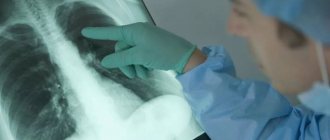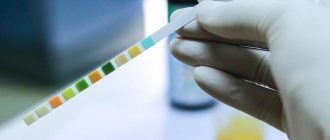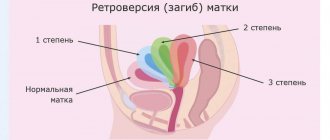Brief historical background
O. was first described in 1875 by T. Jurgensen, who observed two patients with atypical pneumonia, who had contact with sick parrots. In 1879, J. Ritter and in 1882, D. Finkler, reported familial outbreaks associated with the disease in parrots.
In 1892, Dujardin described a large outbreak of a similar disease in Paris associated with parrots imported from Buenos Aires. 49 people fell ill, of which 16 died. Morange (A. Morange, 1895) proposed calling the disease that occurs in humans upon contact with parrots psittacosis.
In subsequent years, outbreaks of the disease were recorded in many countries (Germany, England, Italy, etc.).
In 1929-1930 In Europe, an epidemic of psittacosis arose - from 500 to 800 people fell ill, the mortality rate reached 20-40%. Subsequently, in different countries, diseases associated with infection from pigeons, seagulls, bullfinches, chickens, ducks, turkeys, etc. began to be identified. The diseases were not severe, and mortality was rare. In 1942, Meyer proposed to call this disease ornithosis.
In the 50s It was found that psittacosis is a special case of psittacosis.
Sources
- Medical microbiology Pozdeev O.K. / Ed. acad. RAMS V.I. Pokrovsky. – M.: GEOTAR-MED, 2002.- 768 p.
- Chronic chlamydial infection as a cause of demyelination and vasculitis of the central nervous system: some aspects of diagnosis / Yu. I. Vainshenker, I. M. Ivchenko1, I. V. Nuralova2, V. A. Tsinzerling, A. V. Sozina, L. B. Kulyashova, L. A. Berezina, O. V. Narvskaya
- Journal of Infectology. Features of the clinical picture of ornithosis and respiratory mycoplasma infection during the 2012 outbreak L.V. Voloshchuk, A.L. Mushkatina, E.G. Rozhkova, P.V. Zarishnyuk, T.L. Tumina, G.L. Dneprovskaya, M.I. Sadikhova
- Bezdenezhnykh I.S. Ornithosis. Epidemiology, clinic. / I.S. Without money. – M.: Medicine, 1959. – 211 p.
- Bilibin A.F. Epidemiology and clinic of ornithosis / A.F. Bilibin // Klin. Medicine. – 1962. – No. 3. – pp. 34-38.
Geographical distribution
O. is registered in all countries. The disease is more often associated with certain professions; Epidemic outbreaks have been noted among workers of poultry farming and poultry processing enterprises, zoos, etc.
Sporadic cases, cases of familial and group psittacosis are predominantly of a domestic nature and are associated with infection from ducks, turkeys, chickens, rock pigeons and indoor birds (parrots, canaries, siskins, goldfinches, etc.), less often from wild birds. The frequency of O. diseases in different territories is not the same and depends on the distribution of O. in birds in a given area.
Psittacosis of birds
Epizootological data
The disease occurs on all continents of the world. Ducks, turkeys, geese, chickens, pigeons, parrots, sparrows, pheasants, seagulls, etc. are affected. About 150 species of birds are susceptible to the disease. The sensitivity of different species of birds varies; birds of the parrot family are most susceptible to infection. Young birds are more sensitive than adult birds. The source of infection is often a sick bird - a virus carrier, which releases microorganisms with nasal mucus, when sneezing, coughing, or with droppings. Infection occurs through alimentary and aerogenic routes; dried particles of droppings from a sick bird, fluff, and desquamated skin epithelium can enter the lungs, air sacs of birds and the gastrointestinal tract, and there, penetrating through the mucous membranes, causing disease. A bird that has had psittacosis usually remains a virus carrier for a long time.
Symptoms of psittacosis in birds: In turkeys , cachexia, anorexia, diarrhea, decreased egg production, emaciation and paresis of the limbs are noted. In ducks, young animals 20-30 days old are more susceptible, the disease lasts 20-60 days, mortality reaches 30%. The disease is characterized by a runny nose, cough, difficulty breathing and conjunctivitis. Geese have similar symptoms. Pigeons are affected more often than other bird species and play a major role in the spread of infection. Chicks experience diarrhea, poor plumage, and stunted growth. In adult pigeons, the disease is characterized by a runny nose, conjunctivitis, lacrimation and wheezing. In adult parrots , lack of appetite, drowsiness, conjunctivitis, weakness, and profuse diarrhea are noted, leading to exhaustion and death. In young birds, bilateral conjunctivitis often occurs, exudate is released from the beak and wax, photophobia and intestinal upset develop, and the droppings may be green and yellow. In adults, in addition to these signs, inflammation of the air sacs and paralysis of the limbs of the legs are noted. Death may occur within 1-2 weeks.
Etiology
The causative agent of ornithosis is chlamydia (see); According to their basic biological properties and unique development cycle, chlamydia differ from all known microorganisms, which led to their separation (1971) into an independent order Chlamydiales, ord. nov, sem. Chlamydiaceae.
This pathogen was first isolated in 1930 by Bedson, Western and Simpson (SP Beclsori, G. T. Western, S. Sympson) from the organs of a dead parrot. Subsequently, it was found that the strains isolated from different species of wild and domestic birds are identical, with the exception of the degree of virulence (for humans) of individual strains. In 1932, Bedson and Bland (J. O. W. Bland) first described the morphogenesis and development cycle of the pathogen.
Elementary particles of chlamydia O. are round in shape, dia. 250-350 nm, formed in the final stage of a complex intracellular development cycle; they penetrate into the cytoplasm of the sensitive cell by phagocytosis. In place of the embedded and then disintegrated elementary particle, a structureless formation (RNA-containing matrix) is formed, where large forms of the pathogen develop (diameter 500-1000 nm), which later gradually decrease and acquire a denser shell (obviously as a result of dehydration), reach the size and structure of elementary particles. Then the elementary particles leave the destroyed cell into the intercellular space and can be reintroduced into a healthy cell. Large or immature reticular, vegetative forms do not have a nucleus, constant size and structure, and do not have inf. properties, are not stable during storage and are sensitive to antibiotics in vitro; their shell is thin and easily permeable.
Elementary particles have a constant morphology - a DNA-containing nucleoid of a helical structure, have inf. properties, antigenically active, stable during storage and not sensitive to antibiotics in vitro, capable of penetrating into cells, where they undergo the described development cycle; their shell is dense, impenetrable.
Chem. the composition of the pathogen is complex; Thus, electrophoresis in polyacrylamide gel revealed up to 38 different proteins. One of the functions of proteins in elementary particles is the enzyme DNA-dependent RNA polymerase.
The only proteins missing are histidine and arginine. By dry weight in the particles, protein is approximately 25%, DNA - 3.5%, mRNA - 2-7%, carbohydrates, lipids (phospholipids, neutral fats) in different proportions. The shells of large forms lack cysteine and methionine, and there are few phospholipids and polysaccharides. Chlamydia does not have an electron transport system. They do not synthesize their own adenosestic phosphate acid. The development of chlamydia generally depends on the level of cell metabolism.
At the beginning of its development in the cell, chlamydia suppresses the synthesis of cellular DNA, as well as the synthesis of RNA and protein: macromolecular processes in the cell switch to the synthesis of DNA and protein of the pathogen.
The development of the pathogen is suppressed by tetracycline antibiotics, rifampicin, and interferon; penicillin only temporarily delays the formation of elementary particles, and chlamydia is not sensitive to sulfonamides. The pathogen remains viable at room temperature and at t° 37° for two days, at t° 4-6° for a week, at t° -20-30° for up to 10 months, at t.c -70° for 2 years; after lyophilization, the pathogen persists for up to 5 years or more.
Disinfection of infected material is achieved by heating to a temperature of 80° for 10-15 minutes. or by boiling for 5 minutes, as well as as a result of 3-hour exposure to one of the solutions: 5% chloramine solution, 3% Lysol solution, 2% NaOH solution, potassium permanganate solution (1 : 500), 0.5% benzylchlorophenol solution, 2% dichlorohidontoin solution.
Medicines
Photo: zagranmaster.ru
Macrolides . Drugs of this group are able to penetrate into cells and create a high concentration there. Since psittacosis chlamydia is an intracellular pathogen, the use of drugs that have the above properties is effective. Macrolides have a low toxic effect, there are no cross-allergic reactions with Beta-lactam antibiotics (penicillins, cephalosporins, carbapenems, monobactams). This means that the likelihood of allergic reactions is extremely low. Macrolides do not cause destruction of bacteria, which prevents the release of intracellular toxins. Approved for use by children.
Fluoroquinolones . Synthetic antimicrobial drugs. There are forms for oral administration and parenteral administration (intravenously). Fluoroquinolones are capable of acting on both extracellular and intracellular microorganisms (including Chlamydia psittaci). Drugs of this group create high concentrations in the blood and penetrate well into various organ systems. The most common side effects are allergic reactions, vomiting, nausea, diarrhea, and insomnia. Fluoroquinolones disrupt the development of cartilage tissue, therefore quinolone derivatives are contraindicated for use in children under 18 years of age, pregnant and nursing mothers.
Tetracyclines have a wide spectrum of action against microorganisms, which include chlamydia. Able to penetrate and accumulate inside cells. Tetracyclines act bacteriostatically: they inhibit the functioning of the 30s ribosomal subunits and thereby stop the synthesis of vital bacterial proteins. Tetracyclines are divided into two groups according to the duration of their antibacterial action: short-acting tetracyclines (tetracycline, oxytetracycline) and long-acting tetracyclines (methacycline, doxycycline). The drugs of the first group act on bacteria for 6-8 hours, they are prescribed 3-4 times a day. The drugs of the second group retain their antibacterial effect for 12-24 hours, so it is enough to take them 1-2 times a day.
The most common side effects are allergic reactions (such as urticaria), tooth staining, and dyspeptic reactions from the gastrointestinal tract. Teeth discoloration occurs due to the ability of tetracyclines to bind to calcium ions and deposit in bones and teeth, giving them a gray color. Tetracyclines are not recommended for use in children under 12 years of age; they are contraindicated during pregnancy and breastfeeding. Tetracycline drugs have high hepatotoxicity, so taking tetracyclines is contraindicated in patients with liver diseases.
Epidemiology
The source of infection for O. are birds. The causative agent has been identified in 139 species of wild and domestic birds, but epidemiol. their meaning is not the same. Under natural conditions, the keeper and reservoir of pathogens are pigeons, wild waterfowl (gulls, ducks, petrels, etc.), the pathogen is also found in bullfinches, finches, thrushes, buntings, partridges, tits, siskins, goldfinches and* others. Through direct contact or through pigeons, wild birds infect domestic ducks, turkeys, chickens, etc., which often leads to the development of epizootics in poultry farms. Transovarial transmission of pathogens in birds cannot be ruled out.
The percentage of birds affected by O. in natural conditions is quite high; for example, pigeons in cities up to 50% or more. In pigeons, ducks and other birds, O. is sometimes asymptomatic with prolonged release of pathogens. Based on their significance for humans, birds as a source of infection can be divided into the following groups: poultry, especially ducks and turkeys, from which persons involved in processing bird carcasses or caring for birds become infected, Ch. arr. in industrial, less often at home, conditions; rock pigeons, indoor birds, especially parrots and canaries are sources of infection in domestic conditions; waterfowl wild birds, from which hunters are more often infected. Some authors consider it possible that O. can be infected by mammals (sheep, cows, dogs, cats, rodents); spontaneous infection of certain types of rodents with chlamydia has been discovered in nature.
Humans are highly susceptible to O., but as a source of infection it is obviously not of significant importance. It is assumed that, unlike birds, a sick person emits few pathogens; It is also possible that the pathogen of O. in the human body reduces or loses its pathogenicity.
The pathogen is shed by birds in feces discharged from the nose. Dried particles of mucus or feces contaminated with a pathogen fall on feathers, down, eggs and various environmental objects, mix with dust, etc. creates the possibility of infecting people.
The main route of transmission of infection is airborne dust and airborne droplets.
Group diseases of O. on poultry farms are more often observed from May to September; sporadic diseases can occur throughout the year.
Who is at risk?
The main risk group is formed by people who directly interact with birds:
- employees of veterinary clinics, pet stores and zoos,
- poultry farm workers,
- breeders,
- people involved in breeding poultry at home,
- owners of parrots and other ornamental birds living in cages.
Photo: anuta23 / freepik.com
Another risk group includes people with weakened immune systems, which increases susceptibility to chlamydia. A decrease in the body's defenses may be due to: HIV infection and AIDS, malignant tumors and their treatment (chemotherapy, radiation therapy), long-term use of glucocorticosteroids (for example, in the treatment of autoimmune diseases such as rheumatoid arthritis), as well as chronic diseases that are difficult to treat (severe heart failure, chronic pancreatitis).
Pathogenesis
The causative agent of O. develops intracellularly, affecting mainly the epithelium of the bronchi and bronchioles, cells of the reticuloendothelium, lymphoid tissue and lungs, which leads to cell destruction and penetration of the pathogen with cell decay products into the blood, causing viremia), toxemia and allergic changes in the body, then dissemination occurs pathogen into parenchymal organs. Against the background of these changes in tissues and especially in the lungs and bronchi, opportunistic bacteria of the respiratory tract often cause a mixed infectious process.
The pathogen can linger in the reticuloendothelial cells and then enter the blood again, causing a relapse of the disease.
Changes in organs, especially in the lungs, are predominantly bronchovascular in nature and persist for a long time after removal of intoxication, causing residual interstitial inflammatory phenomena in some patients; reparation patol occurs more often. process or the virus-carriage persists.
Forecast
As a rule, with timely and correct treatment, complete recovery occurs.
In rare cases, the disease can cause inflammation of various internal organs: the brain and its membranes (encephalitis and meningitis), the liver (hepatitis) and the inner lining of the heart (endocarditis). It is also possible to develop acute respiratory and/or heart failure syndrome.
Fatal complications occur with a frequency of less than 1:100 cases, that is, less than 1% of cases. The main causes are acute respiratory and heart failure, caused by damage to the lungs and heart, respectively.
Pathological anatomy
Rice.
1. Microscopic specimen of a lung with psittacosis: desquamated alveolocytes, sharply increased in size, are visible in the alveoli (indicated by arrows); x 250. When O. in a person, as a rule, the lungs are affected - a picture of focal and then confluent pneumonia is observed (see). The exception is atypical forms of O., in which changes in the lungs are not observed. Macroscopically, the lungs are dense, edematous, dark red in color with small focal hemorrhages under the pleura and on the incision. In the lower lobes of the lungs, ch. arr. on the right, sharply defined red, purple and gray lobular lesions are visible, which sometimes merge, covering the entire lobe; There may be fibrinous deposits on the pleura. Lymph nodes, the nodes of the hilum of the lungs and the area of tracheal bifurcation are enlarged, full-blooded, with symptoms of lymphadenitis (see). Microscopically, against the background of congestion of the capillaries of the lungs, a sharp increase and swelling of alveolocytes is detected (Fig. 1), in the cytoplasm of which cocci-like inclusions of diameter are found. 280-455 nm. Subsequently, the alveolar lining undergoes degeneration and necrosis with desquamation of cells into the lumen of the alveoli, where fibrin, lymphocytes and a small amount of granulocytes are mixed with them. Lymphohistiocytic infiltration can spread to the walls of the alveoli and bronchioles, creating a picture of interstitial pneumonia in some areas. The epithelium of bronchioles can also undergo necrotic changes. The liver and spleen are enlarged, the mucous membrane of the alimentary canal is congested. When c. is affected. n. With. serous meningitis is sometimes observed (see).
Tissue changes in O. are characterized by specific changes caused by parasitism of the pathogen in macrophages, the reticuloendothelial system, leading to necrosis of these cells, and nonspecific - toxic-allergic, expressed in hyperemia, stasis, hemorrhages (sometimes in the adrenal glands), as well as dystrophy of the myocardium and liver , glial cells of the nervous system. Tissue changes are usually accompanied by the development of lymphohistiocytic infiltration against the background of pneumonia, hepatitis, meningoencephalitis, and polyneuritis. In the first hours after infection, signs of circulatory disorders and characteristic intracellular inclusions appear in the tissues; on days 2-3, macrophages die and inflammatory infiltrates develop. In protracted forms of O. pneumosclerosis (see), atelectasis (see) occurs.
Immunity in O. has been little studied. Antibodies accumulate in the blood of sick people, detected using the hemagglutination inhibition test (HIT) from the 4th to 7th day of illness; then their number decreases relatively quickly (4th week), and they disappear from the blood after 0.5 years from the onset of the disease. From the 7th to 10th day, complement-fixing antibodies appear, which for a long time (for two or more years) are found in the blood of those who have recovered from the disease or carriers of the pathogen O. It is believed that humoral immunity does not provide protection against recurrent disease, the cellular link of immunity is important , detected, in particular, by performing intradermal tests with psittacosis allergen.
Clinical picture
The incubation period varies within. 6-25, most often lasts 8-12 days.
The disease almost always begins acutely - with chills, headaches and muscle pain, and fever. Only some patients experience a prodromal period for 2 days in the form of general weakness, malaise, nausea, and joint pain. Body temperature quickly rises to 38-39° and is remitting, and in severe cases, constant; in mild cases it is low-grade and short-term (2-3 days). In the first days, lower back pain, severe weakness, insomnia, sore throat, dry cough, hyperemia of the pharynx, tonsillitis, injection of blood vessels in the sclera and conjunctiva, the face is usually hyperemic. On the 3-4th day, some patients develop an allergic rash.
In the wedge, O.'s picture, lung lesions play a leading role. From the 2-3rd day of illness, patients experience symptoms of laryngitis and especially tracheobronchitis. Pneumonia appears from the 5th to 7th day of illness and reaches its development by the 8th to 12th day. It is characterized by a shortening of the percussion sound, weakening of breathing, single crepitating or moist rales in the lower parts of the lungs, often on the right, but these changes are not constant and sometimes are not detected at all; they are more pronounced during the period of reverse development of the disease at normal temperatures.
In 30-40% of patients, often on the 8-10th day, against a background of high temperature, the cough intensifies, sputum appears, sometimes streaked with blood, shortness of breath occurs, cyanosis of the mucous membranes occurs, and a more vivid picture of pneumonia is determined in the lungs. Conditionally pathogenic microbes, mainly staphylococci, are found in the sputum and blood of patients. During the period of reverse development of the disease, abscesses may appear in the lungs.
On the part of the cardiovascular system, pulse lability is observed, in uncomplicated cases bradycardia, which is replaced by tachycardia; during the period of reverse development of the disease, as well as during the addition of a secondary infection, blood pressure in the vast majority of patients is reduced. In moderate and severe cases of the disease, muffled heart sounds, systolic murmur, flattening and biphasic T waves on the ECG, and prolongation of the S-T interval are noted, indicating toxic diffuse myocardial damage.
Myocarditis of a toxic-allergic nature is possible.
Changes in the gastrointestinal tract. tract are not specific: patients’ appetite worsens, nausea appears, sometimes vomiting and loose stools. The liver is enlarged in almost all patients; in V3, there is a violation of its function, up to the development in isolated cases of parenchymal hepatitis. The spleen is enlarged, but can be detected by palpation only in 1/3 of cases.
The nervous system is affected in almost all patients. The most common symptoms are headache, weakness, insomnia, adynamia, lethargy, and in severe cases - depression, delirium, and sometimes confusion with psychomotor restlessness. In severe cases, pseudofocal changes are also observed: short-term decreased vision, anisocoria, nystagmus or nystagmoid, arachnoiditis. Many patients with high intoxication may experience meningism, and in 1% serous meningitis with a short and favorable course. Autonomic disorders are also evident.
Leukopenia or normocytosis, aneosinophilia, lymphocytosis are observed in the blood; from the 2nd week of the disease, lymphopenia, ROE is accelerated.
Due to the predominance in the wedge, the picture of certain symptoms, flu-like, pneumonic, typhoid and meningeal variants of the course of O are distinguished. The first two are most common.
O.'s course can be severe, moderate, mild and erased, and mild and erased forms are rare, last a short time and are diagnosed as influenza or acute respiratory disease.
Approximately 1/5 of patients experience relapses against the background of still unfinished processes in the lungs and incomplete recovery, more often in people over 30 years of age and in severe cases of O. Relapses can be early (at 2-4 weeks) and late (after 3-6 months).
Sometimes (up to 12% of cases) the disease takes a long course (up to 2-10 years) - chronic, form O. In 1/4 of patients, residual phenomena in the form of asthenovegetative disorders and chronic, inflammatory processes are observed for a long time (for several years) respiratory tract and lungs, foci of pneumosclerosis. Damage to other systems (chron, hepatitis, arthritis, etc.) is observed less frequently.
There is also a latent course of O., which can end either in recovery and release from the pathogen, or in the development of obvious wedges, manifestations, often resulting in a recurrent or hron form.
Complications
rare. These include paralysis of the vocal cords, paresis of the limbs, polyneuritis, thrombophlebitis, collapse, as well as encephalitis, myocarditis, secondary staphylococcal diseases (from focal to generalized forms).
Diagnosis
It is difficult to recognize O. only on the basis of the clinic, especially in the first days of the disease. Great assistance in making a diagnosis is provided by epidemiol, data, the patient’s profession, and laboratory. research. Rentgenol and research methods are important.
Laboratory diagnostics
The diagnosis can be established by isolating the pathogen or as a result of examining the patient’s blood serum using RSC; More sensitive methods have also been proposed - Immunofluorescence and X-ray, as well as using an intradermal test.
Rice. 2. Microphotograph of a chicken embryo culture cell infected with the pathogen of psittacosis: 1 - nucleus of the culture cell, 2 - cytoplasmic inclusion; Immunofluorescence method; X 900.
The pathogen can be isolated from the patient’s blood in the first two weeks of the disease, from sputum - up to the 20-25th day. In cases of death, pieces of lung tissue, spleen and exudate from the pleural cavity or pericardium are taken for examination. For transportation, blood, sputum and cadaveric material are placed in a sterile tightly sealed container, which is placed in a container with ice and sealed. Isolation of the pathogen is carried out by infection in the yolk sac of chicken embryos or in the brain of white mice. In fingerprint smears from the yolk sacs or brains of infected white mice, stained with acridine orange under fluorescent microscopy, formations containing various developing forms of the pathogen are visible in the cells - bright red or yellow-green - the so-called. cytoplasmic inclusions. Immature (red) inclusions contain predominantly RNA, mature (yellow-green and green) inclusions contain DNA. Elementary particles in the cell or extracellularly have a bright green color. When stained according to Romanovsky, inclusions can have a violet-red color (immature) and blue-violet (mature), elementary particles outside the cell are also blue-violet. The pathogen develops well in the culture of epithelial cells - primary or continuous lines of various origins. The nature of the cytoplasmic inclusions can be determined by a direct or indirect immunofluorescence reaction using ornthotic immune serum: cytoplasmic inclusions of the pathogen treated with antibodies will clearly glow within the boundaries of the inclusion (Fig. 2). To identify the isolated pathogen, the blood serum of a guinea pig immunized with the isolated pathogen can be examined using RSC.
To study the RSC of the patient’s blood serum, the first portion of blood is taken in the first days of the disease, the second - with an interval of 10-15 days. The diagnosis is confirmed if the antibody titer in the second portion of serum increases at least twofold. At the beginning of the disease, up to the 7th-10th day, the antibody titer in the RSC may not be higher than 1:8, and by the end of the disease 1:32, 1:64, less often 1:128.
At low titers, antibodies can remain in the blood for a year or more. To stage RSC, soluble O antigen is used.
To perform an intradermal test, the O. allergen is used, which is an inactivated cultural liquid obtained as a result of infection of a chicken embryo cell culture by the pathogen. The allergen in a volume of 0.1 ml is injected intradermally along the midline of the anterior surface of the forearm, the control allergen is injected on the other arm. In 6 hours. a red spot is formed, which disappears after 16-18 hours at the site of administration of the control allergen, and an infiltrate forms at the site of the specific allergen after 24 hours. The result is evaluated conditionally, according to the 4-cross system. A positive skin reaction may be accompanied by a feeling of burning and itching. After 2-3 days the reaction subsides. A specific intradermal reaction is observed in approximately 97% of patients with O. from the 2-3rd day of illness, increasing by the 10-14th day, and can be detected within 2-3 months. after an illness. In persons with chronic forms of the disease, a skin allergic reaction is observed throughout the entire illness.
The antigen and allergen have group-specific properties and give a positive result in many diseases of chlamydial etiology (for example, trachoma, lymphogranuloma venosum, etc.), so the results of reactions must be taken into account in accordance with the wedge, diagnosis.
X-ray diagnostics
Rice.
3. Anterior direct radiographs of the right half of the chest of a patient with ornithosis pneumonia: a - the arrow indicates a heterogeneous, with areas of clearing, shadow of the infiltrate; b — arrows indicate the triangular shadow of the segmental infiltrate. Roentgenol, O.'s picture depends on the localization, prevalence and severity of the process. If only the larynx and trachea are affected, rentgenol. data may be quite sparse. Only on high-quality tomograms can one notice thickening of the walls and some narrowing of the lumen of the larynx and trachea, caused by swelling of the mucous membrane and submucosa. Involvement of the bronchi in the process is manifested by a picture characteristic of acute bronchitis, i.e., redundancy of the pulmonary pattern and the appearance of paired stripes displaying thickened walls of the bronchial branches. More pronounced changes are observed with damage to the lung tissue. Psittacosis pneumonia can be characterized by three different rentgenol. paintings. In 25-30% of cases, a cloud-like infiltrate of various sizes and shapes is detected; the intensity of the infiltration shadow is usually not high. This is explained by the fact that some of the alveoli and acini located inside the inflammatory focus remain airy. In this regard, the shadow of the infiltrate can be heterogeneous, since small areas of clearing are visible against its background (Fig. 3, a). Psittacosis pneumonia occupies segments or lobes somewhat more than in chronic patients. In these cases, rentgenol, O.’s picture is characterized by a triangular shadow, the apex directed to the root, and the base directed to the costal surface (Fig. 3.6); as with the infiltrative form of O., there is an increase in bronchopulmonary lymph nodes, which leads to an expansion of the root shadow. The surrounding pulmonary pattern is usually strengthened and often deformed. Unlike other viral pneumonias in O., the interstitial tissue surrounding the lobules and acini can remain relatively intact for a long time. Finally, in some cases, O. is manifested by multiple foci of darkening, characterized by fairly rapid dynamics: with the rapid resorption of some foci, new ones appear. X-ray, the picture resembles the so-called. migrating pneumonia, from which it is characterized by a lower intensity of shadows. Roentgenol, changes in O. persist longer than the wedge, manifestations of the disease. After resorption of pneumonic infiltrates, an excessive pulmonary pattern remains for a long time.
Differential diagnosis
Differential diagnosis is carried out with influenza (see), parainfluenza (see Parainfluenza diseases), adenoviral diseases (see), respiratory viral diseases (see), pneumonia of various etiologies (see Pneumonia), as well as with typhoid fever (see. ), Q fever (see Q fever), tularemia (see), leptospirosis (see), brucellosis (see), inf. mononucleosis (see Infectious mononucleosis), pulmonary tuberculosis (see Respiratory tuberculosis), etc. It is most difficult to distinguish O. from the pulmonary form of benign lymphoreticulosis (see Felinosis), with an intradermal test with an ornithosis allergen and RSC with an ornithosis antigen positive. With benign lymphoreticulosis, there is a history of contact with a cat, the presence of a primary affect (scratches, vesicles), a large increase in X-ray examination of the lungs of the tracheobronchial (bifurcation) lymph nodes, a greater severity of the intradermal test with a lymphoreticulosis than with an ornithosis allergen.
Diagnostics
Photo: tltgorod.ru
The diagnosis of psittacosis is made based on medical history (contact with synanthropic birds, presence of parrots and canaries at home), on the basis of clinical manifestations and laboratory data.
The main methods of laboratory research are bacteriological, biological, serological:
- Bacteriological method. It is first necessary to conduct a bacterioscopy of the biological material. For microscopic examination, a phase-contrast method is used; biological material can also be stained.
- Biological method. Chlamydia psittaci is an intracellular parasite; therefore, inoculation of the pathogen on nutrient media is not used for indication. Instead, a method of infecting chicken embryos is used. After introducing the infected biological material into the chicken embryo, the egg is placed in a thermostat. If chlamydia is present in a chick embryo, zones of cell death (cytolytic plaques) are observed during the first five days. After 5-10 days it dies and is removed from the shell for further research and indication of chlamydia.
- Serological method. Currently, the two most sensitive methods for indicating the pathogen are used: enzyme-linked immunosorbent assay (ELISA) and polymerase chain reaction (PCR). When performing an ELISA, the patient’s blood is examined to determine the presence and concentration of antibodies (AT) to Chlamydia psittaci. The most accurate method of indicating the causative agent of psittacosis is PCR. To conduct a polymerase chain reaction, biological material containing chlamydia (smear, sputum) is required.
Treatment
Treatment is etiopathogenetic depending on the form, severity and period of the disease. Antibiotics of the same series are effective. The course of treatment with tetracycline is 5-10 days, depending on the rate of reduction of intoxication and inflammation in the lungs. For pneumonia accompanied by a bacterial infection, antibiotics are used that act on the isolated pathogen.
Among pathogenetic agents, anti-inflammatory and hyposensitizing agents are used (pipolfen, suprastin, diphenhydramine, acetylsalicylic acid) in the usual dosage for 5-7 days. In severe cases, corticosteroids (cortisone, prednisolone) are prescribed.
Prescribe vitamins, cardiovascular medications, oxygen therapy, and during the period of reverse development of the disease, physical therapy. No special diet required.
In case of relapses and hron, the treatment is the same as for the acute form, but with the addition of agents that increase the body’s reactivity (dibazol, pentoxyl); Vaccine therapy is carried out subcutaneously or intradermally.
Prevention
- Quarantine of purchased poultry for a period of 1.5 months.
- Taking blood tests for dangerous bacterial infections.
- Proper care, compliance with hygiene standards and rational feeding of the pet.
- If several birds are kept, if at least one bird becomes ill, all cohabitants are treated with antibiotics.
- Avoid free walking on the street, as pigeons are active carriers of psittacosis.
- Regular cleaning and disinfection of cages and feeders.
- Compliance with the temperature regime recommended for each type of bird.
- Check your pet for psittacosis if the disease is detected in family members.
- Destruction of carcasses of dead birds.
Owners should also take special preventive measures to prevent infection. It is recommended to clean up after your pet and clean the cage using a mask and gloves, regularly remove excrement, daily wet cleaning of the room and surfaces near the bird, and a minimum of contact with an infected bird.
Be sure to consult a doctor if you find a “suspicious” bird for timely diagnosis of psittacosis.










